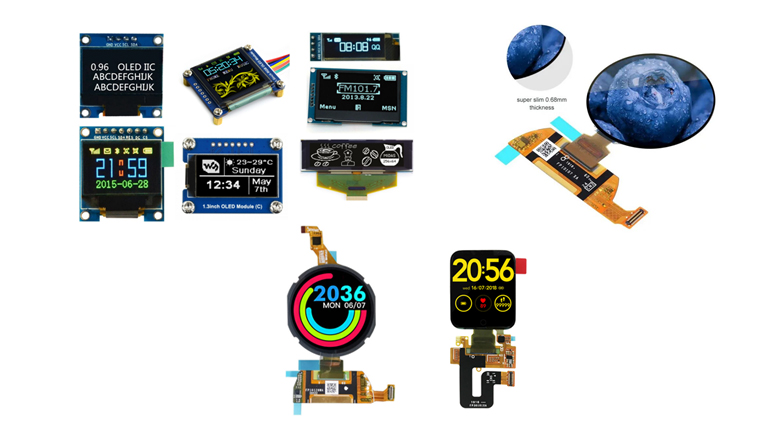
- Product Information
- oled
oled
KJC DISPLAY CORPORATION raises your value of expression
Definition
DEFINING

Self-luminescence using organic compounds that emit light
OLED, abbreviation of Organic Light Emitting Diodes, is a display that emits light by using organic compounds that emits light such as red, green, and blue on an organic substrate as a light emitting layer.
Feature
“ABCDE” technology excellence of OLED
-

- Wide viewing "A"ngles
- OLED display is a technology that uses self-emissive elements. It has Lambertian reflection that emits light of the same brightness from any angle, and has a wider viewing angle than LCD.
-

- True "B"lacks
- Perfect black can be expressed due to the self-luminous feature of OLED. Since OLEDs do not emit light when the power of each pixel element is turned off, the black area of the screen has to be black. OLEDs can achieve higher contrast ratios with deeper blacks. Therefore, when OLED is applied to a display, a high contrast ratio is realized by expressing the deepest black, and through this, a vivid screen can be seen.
-

- Vibrant "C"olors
- OLED displays have the characteristic of being able to express a wide range of colors through organic materials with high light emitting characteristics. Currently, OLED displays are certified as being the most compliant with TV color range standards.
-

- Variety in design
(Super-thin “D"esign) - OLED is a solid-state thin film device. Since OLED displays can be manufactured on glass or plastic substrates, they offer a variety of shapes ranging from rigid, curved, flexible, and rollable. Because it can be made slim and light using glass or plastic as support, OLED displays are essential in the mobile field.
- Variety in design
-

- Response speed of images
("E"ye comfor) - The light emitting process of OLED devices is very fast, ranging from micro-seconds to nano-seconds.
- Response speed of images
Application
APPLICATIONS









